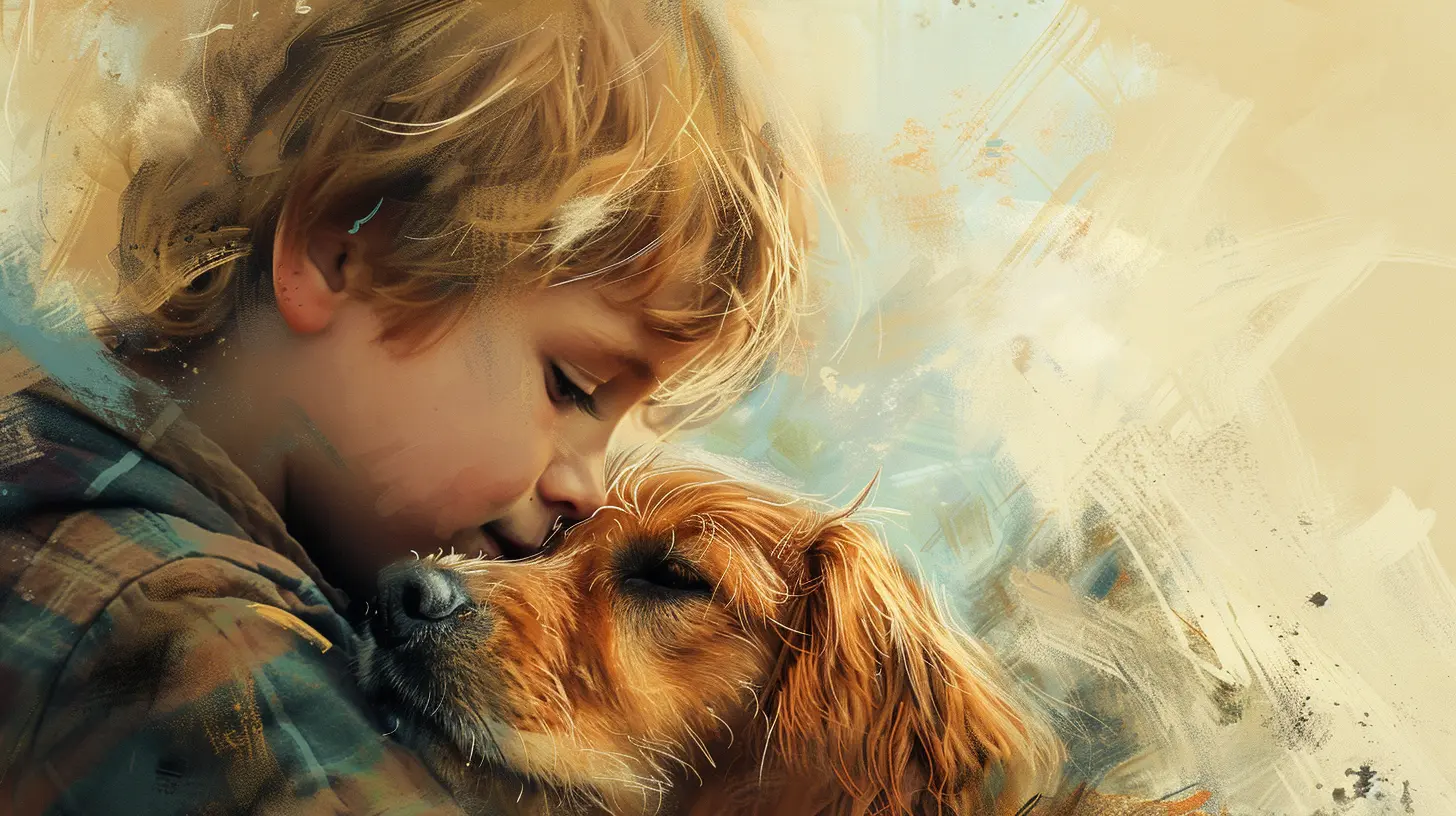How to Help a Child Cope with the Death of a Pet
1 November 2025
Losing a pet is never easy. Whether it’s a wagging-tailed pup, a sleepy kitty, or even a shy little hamster, pets often become part of the family. When a pet dies, kids can feel like their whole world just flipped upside down. And if you’re a parent or caregiver, watching your child go through this heartbreak can be just as painful.
So, how do you help a child cope with the death of a pet? Let’s walk through this delicate journey together.
Why Pet Loss Hits Kids So Hard
Kids form strong emotional bonds with their pets. To them, their pet isn't just an animal—it’s a best friend, a playmate, and sometimes their greatest secret-keeper.So, when that pet passes away, it can feel like losing a sibling or a close friend. Unlike adults, children often don’t have the emotional tools or life experiences to process grief. They may not understand death, and that confusion can create fear, sadness, and even anger.
Plus, for many kids, this might be their first real encounter with death. That’s heavy stuff.
First Things First: Be Honest
It’s tempting to sugarcoat things—to say the dog ran away or that the cat has gone to live on a farm. But those white lies can actually do more harm than good, especially once the truth comes out.Instead, explain death in a way that’s honest but age-appropriate. For younger children, you might say, “Our pet’s body stopped working, and they won’t be coming back. It’s okay to feel sad.”
Avoid vague phrases like “went to sleep” or “passed on” without context—they can confuse kids and even make bedtime scary. Remember, clarity is kindness.
Acknowledge Their Feelings
Let’s not skip over this one. Kids need to feel heard.They might cry. They might scream. Or they might act like nothing happened at all. There's no 'right' way to grieve, and children express emotions differently.
What you can do is validate their feelings. Say things like:
- “I know you’re hurting. I miss them too.”
- “It’s okay to cry. That shows how much you loved them.”
- “I’m here if you want to talk—or even if you don’t.”
Grief doesn’t follow a schedule. It comes in waves. Just let them ride it in their own time.
Share Your Own Feelings
Kids look to adults to understand how to respond. If you’re bottling up your emotions to ‘stay strong’, they might think they need to do the same.It’s okay to let them see your tears. It teaches them that sadness is a natural part of life, and more importantly—it’s okay to show it.
You might say, “I'm feeling really sad because I miss Max too. He was such a big part of our family.”
By opening up, you're modeling healthy emotional expression.
Create a Space for Goodbyes
Children need closure. They benefit from a ritual or a moment to say goodbye.You can hold a small memorial in the backyard or a place your pet loved. Let your child choose a favorite photo, write a letter, or draw a picture. You could even plant a tree in memory of your pet.
These little acts can be incredibly healing. They mark the importance of the loss and allow your child to feel included in the grieving process.
Keep Your Routine (As Much As Possible)
After a big loss, structure can be comforting. Try to keep daily routines stable—same bedtime, regular meals, and school drop-offs just as usual.Why does this help? Because when everything feels different, familiar routines can anchor a child and give them a sense of predictability and safety.
Use Books or Stories to Talk About Death
Children learn a lot through storytelling. There are plenty of age-appropriate books that tackle the topic of pet loss. They can help your child feel less alone and put big emotions into words.Some popular titles include:
- “The Invisible String” by Patrice Karst
- “When a Pet Dies” by Fred Rogers
- “Goodbye, Mog” by Judith Kerr
Reading about others who've lost pets can offer comfort and open the door to more conversations at home.
Give Them Time
Some kids bounce back quickly. Others take longer. And both are okay.Don’t rush your child through grief. Instead of saying, “You should feel better by now,” try, “It’s okay to still feel sad. Everyone heals in their own time.”
Check in often, and stay connected. Even weeks or months later, grief can reappear—especially on special dates like your pet’s birthday or adoption anniversary.
Should You Get Another Pet Right Away?
This one’s tricky.Some families feel ready quickly, and adopting a new furry friend may bring new joy. But for others, it might seem like “replacing” the one they loved—and that can feel wrong.
Ask your child how they feel. If they’re hesitant, give it more time. Make sure the decision to bring in a new pet comes from a place of healing, not just trying to fill a gap.
If you do decide to adopt, try not to compare the new pet to the old one. Let it be its own unique addition to the family.
Watch for Signs of Complicated Grief
While sadness is normal, there are times when grief can become overwhelming and more serious. Look out for:- Withdrawing from friends or family
- Trouble sleeping or nightmares
- Loss of interest in favorite activities
- Excessive guilt or self-blame (“It’s my fault they died.”)
- Physical symptoms like stomachaches or headaches
If these signs last more than a few weeks or begin to affect day-to-day functioning, it might be time to talk to a grief counselor or child therapist.
There’s no shame in asking for help. Sometimes we all need a little extra support.
Celebrate the Love, Not Just the Loss
While it’s important to sit with the sadness, it's also healing to look back and remember all the good times.Create a memory book or scrapbook with your child. Fill it with pictures, funny stories, and things your pet loved to do.
You could even create a “memory box” filled with a favorite toy, a collar, or photos. These tangible items help keep the connection alive in a healthy way.
Ask your child: “What do you think your pet would want you to remember most?”
Turning grief into remembrance can be incredibly powerful.
Keep the Conversation Going
Grief isn’t one and done. Your child may revisit their feelings again and again—especially around big events or milestones.Be open.
Ask how they’re feeling, even if time has passed. Let them know it’s okay to miss their pet, and that you're always there to talk.
Sometimes all a child needs is an ear and a safe space to talk things through.
Final Thoughts
Helping your child cope with the death of a pet is one of those tough parenting moments no one prepares you for. But it's also an opportunity—a chance to teach your child about love, loss, healing, and resilience.The goal isn't to fix their sadness—it’s to walk beside them through it. To hold their hand, answer their questions, and remind them that feeling broken-hearted is just another way of showing they loved deeply.
Pets bring unconditional love, and even in their passing, they leave behind lessons that shape us.
So hug your little one. Share a memory. Shed a tear. And remember—grief, while painful, is just another form of love with nowhere to go.
all images in this post were generated using AI tools
Category:
Grief And LossAuthor:

Eliana Burton
Discussion
rate this article
1 comments
Amanda McFarlin
Thank you for this insightful article. It’s a difficult topic, but your practical tips and compassionate approach can truly help caregivers support children through their grief. A pet's loss can be profound, and your guidance is invaluable for healing.
November 2, 2025 at 3:26 AM

Eliana Burton
Thank you for your kind words! I'm glad you found the article helpful in supporting caregivers and children through such a difficult experience.


